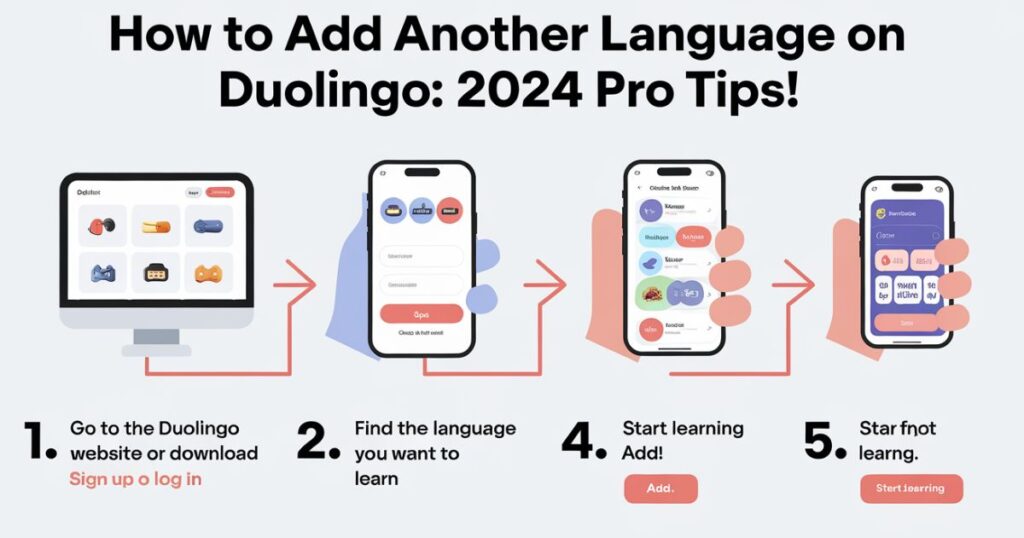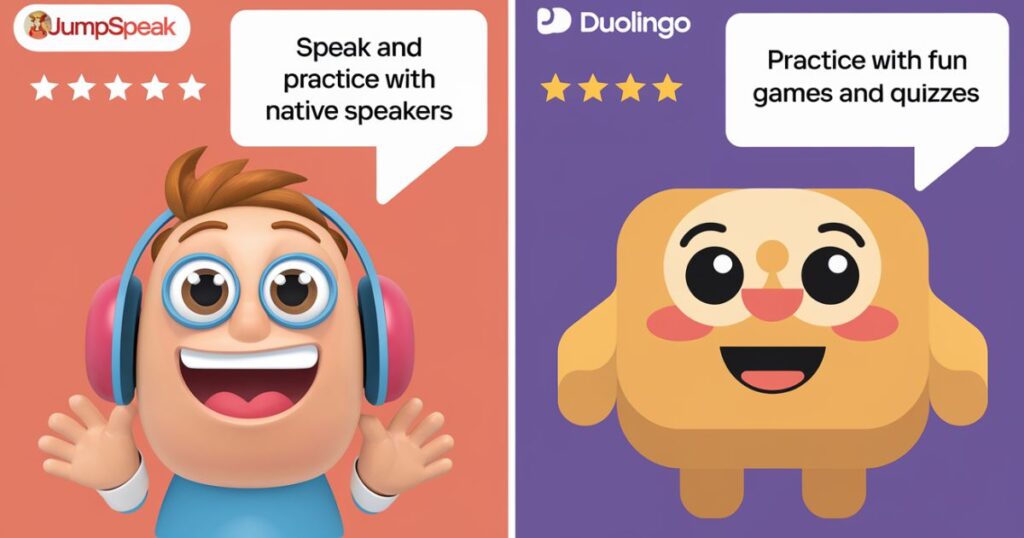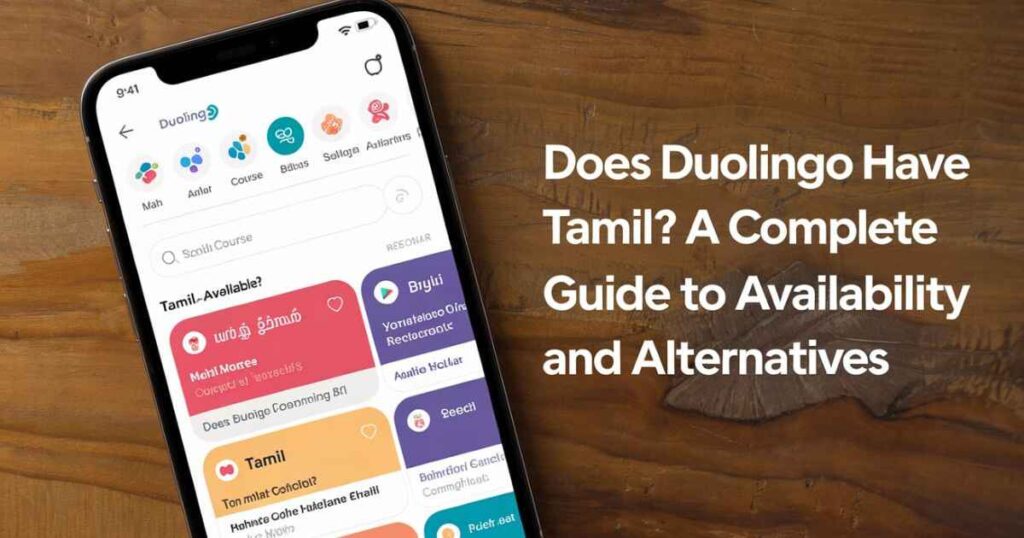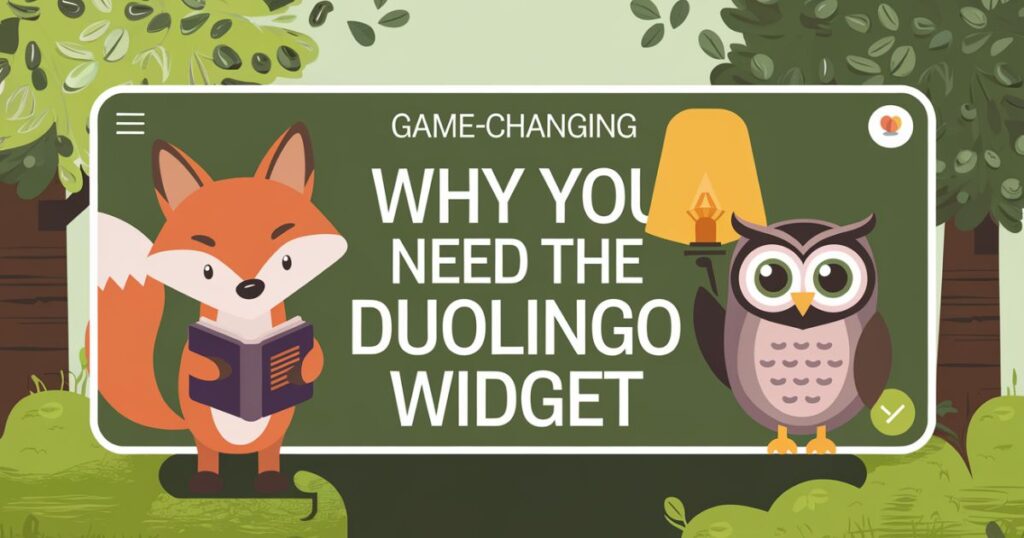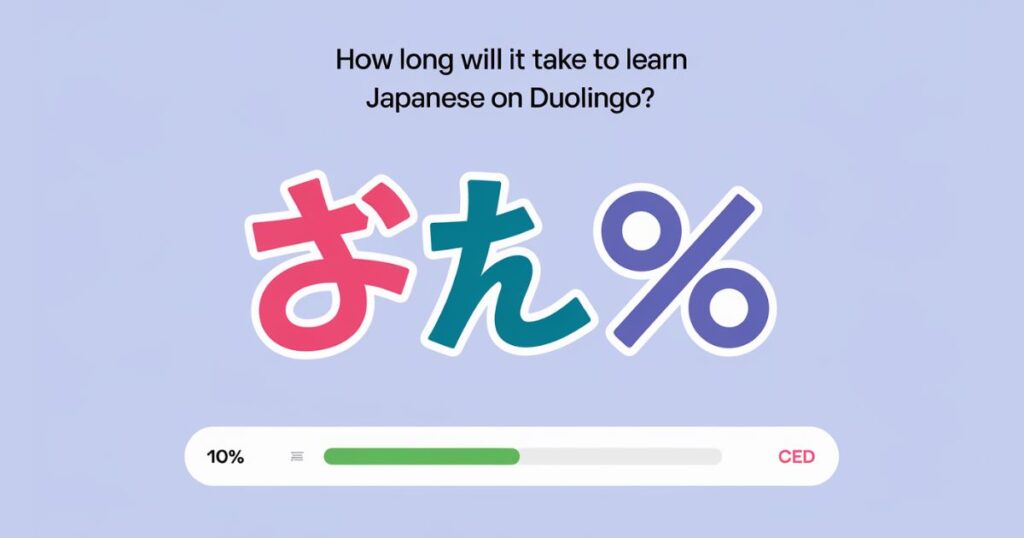The Duolingo French program has grown into a substantial learning path with 150-200 units, making it one of the platform’s most extensive language courses. This structured approach guides learners through progressive levels of French proficiency, utilizing principles of spaced repetition and adaptive technology to reinforce learning.
While Duolingo French offers a robust foundation for language acquisition, it’s important to understand its role as part of a broader learning strategy. The course serves as an effective starting point, but achieving true fluency requires a more comprehensive approach. This includes supplementing Duolingo with additional resources and, crucially, engaging in conversation practice with native French speakers.
Course Structure Overview
The Duolingo French course layout is organized into distinct paths, each containing multiple units that progressively build upon one another. Here’s a comprehensive breakdown of the course structure:
| Path Level | Unit Range | CEFR Equivalent | Focus Areas |
| Rookie | Units 1-20 | A1-A2 | Basic communication, Essential grammar |
| Explorer | Units 21-40 | A2-B1 | Intermediate conversation, Cultural context |
| Traveler | Units 41-60 | B1-B2 | Advanced topics, Professional French |
| Trailblazer | Units 61-80 | B2-C1 | Academic content, Literary French |
Each unit within these paths contains carefully structured lessons that combine vocabulary, grammar, and practical usage. The course employs a unique blend of exercise types, including translation, listening comprehension, speaking practice, and interactive stories.
More Post: Why You Need the Duolingo Widget: A Game-Changer for Language Learners
Detailed Path Analysis
Foundation Path
The initial phase of Duolingo French focuses on building essential communication skills. Learners begin with basic phrases and gradually progress to forming simple sentences. This section emphasizes:
The foundation path introduces fundamental concepts through practical scenarios, including:
- Daily greetings and introductions
- Essential shopping and dining vocabulary
- Basic conversation skills for travel
- Fundamental grammar structures including present tense
| Content Type | Percentage | Focus Areas |
| Grammar | 40% | Basic structures, Articles, Present tense |
| Vocabulary | 35% | Essential words, Common phrases |
| Pronunciation | 15% | Basic sound patterns |
| Cultural Notes | 10% | Simple cultural contexts |
Intermediate Progression
As learners advance into the Explorer level, the content becomes notably more sophisticated. This section introduces complex intermediate topics and delves deeper into French culture and daily life scenarios. The course strategically incorporates free time topics and cooking and health vocabulary to maintain engagement while building practical language skills.
| Learning Component | Key Features | Skills Developed |
| Cultural Stories | Interactive narratives, Regional variations | Contextual understanding |
| Grammar Expansion | Past tenses, Future expressions | Advanced sentence construction |
| Thematic Vocabulary | Professional, Social, Cultural | Diverse communication |
| Listening Practice | Native-speed audio, Regional accents | Comprehension mastery |
Advanced Development
The Traveler section marks the transition into advanced language proficiency. This phase aligns closely with CEFR B2 standards and introduces:
The methodology shifts to immersive learning through:
- Complex grammatical structures
- Professional communication scenarios
- Literary and academic French
- Cultural nuances and idiomatic expressions
| Proficiency Level | Daily Practice (Minutes) | Estimated Completion Time |
| Rookie (1-20) | 15-20 | 2-3 months |
| Explorer (21-40) | 20-30 | 3-4 months |
| Traveler (41-60) | 30-45 | 4-5 months |
| Trailblazer (61-80) | 45-60 | 5-6 months |
Learning Optimization Strategies

Success in the Duolingo French language learning journey heavily depends on maintaining consistent learning streaks and implementing effective study strategies. Research from the University of South Carolina suggests that combining daily Duolingo practice with supplementary immersion activities significantly enhances learning outcomes.
Progress Tracking and Achievement
The Duolingo French progress tracker provides comprehensive insights into your learning journey. Key metrics include:
| Feature | Purpose | Benefits |
| XP System | Daily progress tracking | Motivation maintenance |
| Crown Levels | Skill mastery indication | Clear progression path |
| Achievement Badges | Milestone recognition | Goal-setting support |
| Streak Counter | Consistency tracking | Habit formation |
Cultural Integration and Practical Application

The course seamlessly integrates French cultural elements through its French skill tree, particularly in units focusing on:
- Regional customs and traditions
- French cuisine and dining etiquette
- Social norms and communication styles
- Contemporary French society
Comprehensive FAQ’s Section
Q: How many units are there in total in the Duolingo French course?
The complete Duolingo French course contains 80 units across all proficiency levels. These units are strategically distributed across the Rookie, Explorer, Traveler, and Trailblazer paths to ensure systematic progression aligned with CEFR standards.
Q: What’s the most effective way to progress through units?
Research-backed studies recommend following the natural course progression while maintaining consistent daily practice. The optimal approach combines:
- 20-30 minutes of focused study daily
- Regular review of completed units
- Active participation in story exercises
- Completion of all lesson variations within each unit
Q: How does the Duolingo French course compare to traditional language classes?
Studies from the City University of New York indicate that completing the entire course curriculum can provide language skills equivalent to four semesters of college language classes. However, outcomes vary based on:
| Aspect | Duolingo | Traditional Classes |
| Flexibility | Self-paced learning | Fixed schedule |
| Cost | Free/Premium options | Higher investment |
| Interaction | AI-powered feedback | Direct human feedback |
| Structure | Gamified progression | Academic curriculum |
Q: How long does it take to reach CEFR B2 level?
With consistent practice and optimal use of spaced repetition, reaching CEFR B2 typically requires:
- 12-15 months of regular study
- Completion of approximately 60 units
- Mastery of intermediate topics and advanced grammar
- Regular engagement with supplementary French content
Q: How many units are in the Duolingo French course?
The complete Duolingo French course consists of 80 units distributed across four main paths. These units progressively build upon each other, starting from basic concepts in Unit 1 and advancing to complex language skills in Unit 80. Each unit contains multiple lessons focusing on specific language competencies and skill development.
Q: What is the structure of the Duolingo French course?
The course follows a carefully designed progressive structure divided into four main paths:
- Rookie Path (Units 1-20): Focuses on fundamental concepts
- Explorer Path (Units 21-40): Develops intermediate skills
- Traveler Path (Units 41-60): Advances to complex topics
- Trailblazer Path (Units 61-80): Masters advanced language concepts
Q: How are the units distributed across different proficiency levels?
The distribution aligns with CEFR standards as follows:
| Path Level | Unit Range | CEFR Level | Main Focus Areas |
| Rookie | 1-20 | A1-A2 | Basic communication |
| Explorer | 21-40 | A2-B1 | Intermediate skills |
| Traveler | 41-60 | B1-B2 | Advanced topics |
| Trailblazer | 61-80 | B2-C1 | Professional fluency |
Q: How long does it take to complete the Duolingo French course?
With consistent daily practice, typical completion timeframes are:
- Full course: 14-18 months
- Rookie level: 2-3 months
- Explorer level: 3-4 months
- Traveler level: 4-5 months
- Trailblazer level: 5-6 months
However, individual progress varies based on prior language experience, study intensity, and learning consistency.
Q: How often should I practice on Duolingo to progress effectively?
Research supports maintaining consistent learning streaks with:
- Minimum: 15-20 minutes daily
- Optimal: 30-45 minutes daily
- Weekend: Additional review sessions
- Regular practice with Stories and bonus features
Q: What level can Duolingo French help you achieve?
The complete course can help learners reach a solid CEFR B2 level, with some aspects touching on C1 concepts. This equates to upper-intermediate to advanced proficiency, enabling comfortable communication in most personal and professional contexts.
Q: Can Duolingo get you to C2 level?
No, Duolingo French currently doesn’t extend to C2 proficiency. While the course provides excellent foundations through CEFR B2 and some C1 concepts, achieving C2 mastery requires additional immersion, native interaction, and advanced study methods beyond the app’s scope.
Q: How many XP points do you need to complete French in Duolingo?
While XP accumulation varies by learning path, typically you’ll need:
- Basic completion: 30,000-40,000 XP
- Full mastery (all crowns): 70,000-80,000 XP
- Daily target: 50-100 XP for steady progress
Remember that XP is just one metric – consistent engagement with varied course components and real-world application of learned skills are crucial for genuine language acquisition.
Course Updates and Future Developments
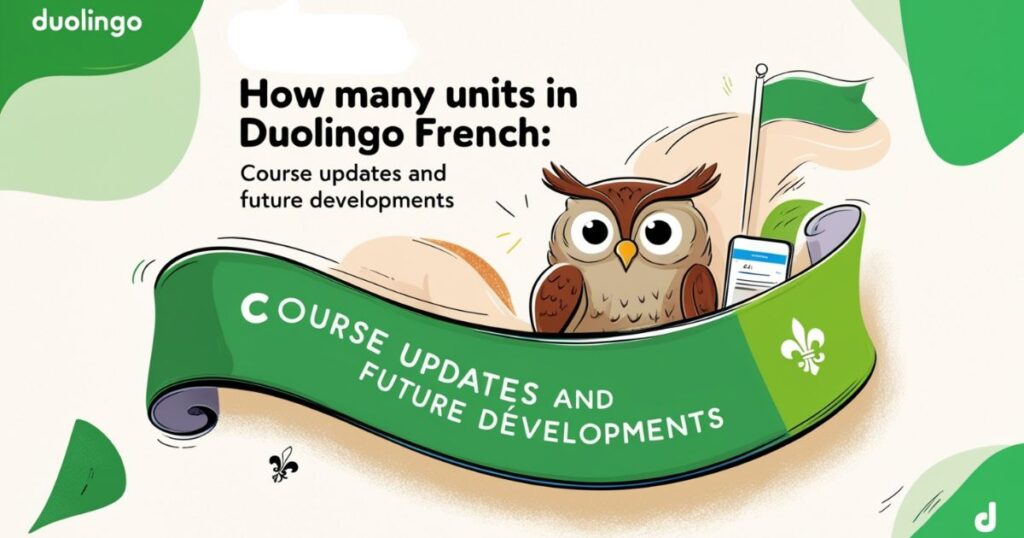
The Duolingo French curriculum undergoes regular updates to enhance the learning experience. Recent improvements include:
| Feature | Purpose | Impact |
| Enhanced Stories | Improved immersion | Better contextual learning |
| Grammar Tips | Detailed explanations | Clearer understanding |
| Podcast Integration | Real-world listening | Advanced comprehension |
| Speaking Exercises | Pronunciation focus | Better verbal skills |
Conclusion
The Duolingo French course layout represents a carefully crafted pathway to French language mastery. Through systematic progression across different proficiency levels, learners can achieve significant language competency while maintaining engagement through gamified learning elements. The course’s success lies in its combination of structured learning path structure, consistent daily practice, and comprehensive coverage of essential language skills.
Success in the program requires dedication to maintaining learning streaks, engaging with various exercise types, and regularly practicing both receptive and productive language skills. Whether your goal is basic communication or advanced fluency, the course provides the tools and structure needed for effective language acquisition.
Remember that language learning is a journey, and the most successful learners are those who maintain consistent practice while actively engaging with the language beyond the app. The combination of structured learning through Duolingo and real-world language exposure creates the optimal environment for achieving your language goals.

Welcome to DuolingoAbout.com! Your go-to hub for expert tips, tricks, and guides to mastering Duolingo. Simplify your language-learning journey with curated content designed for learners at all levels.

